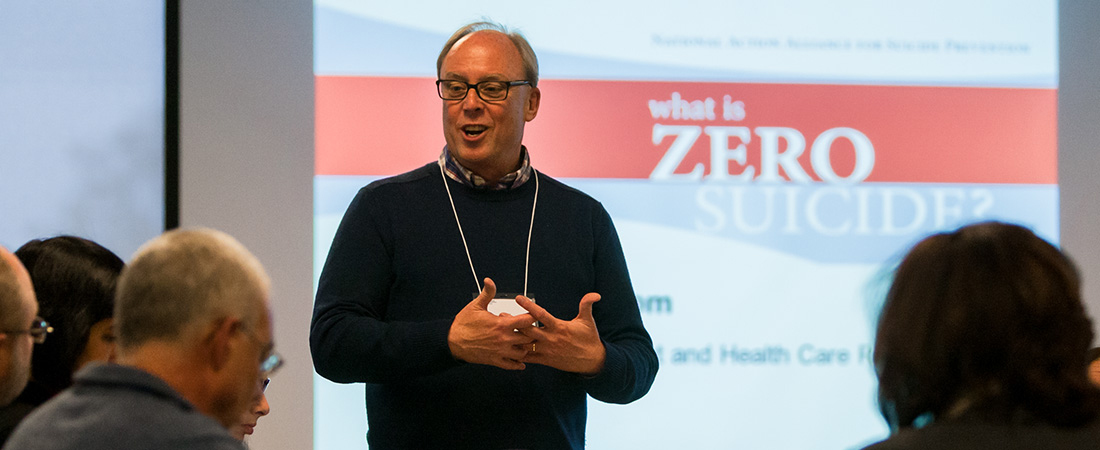Charting a Course for Suicide Prevention

If EDC’s Jerry Reed believes one thing about suicide prevention, it’s that addressing mental health and addiction concerns are a key part of the fight. Some high-profile experts agree with him, too.
On February 22, Reed is joining former U.S. Surgeon General David Satcher and former U.S. Representative Patrick Kennedy at an EDC-sponsored forum addressing the links between mental health, substance abuse, and suicide prevention. Reed describes Satcher and Kennedy as early champions of these concerns and credits them with focusing the nation’s attention on behavioral health like never before.
Q. Why is it important to make the connection between substance abuse, mental health, and suicide prevention?
Reed: Some studies report that as many as 90 percent of people who have died by suicide had either a mental health or substance abuse problem. These disorders are often related. And if we are honest and thorough in our desire to prevent lives from being lost to suicide in America, then we need to apply what we know and reform our policies and practices to reflect this reality.
Q. What does an effective approach to suicide prevention look like?
Reed: We give people the greatest chance for recovery and well-being when we link services. So if someone enters treatment for substance abuse, we shouldn’t just be asking them about drugs and alcohol. We should also be screening them for suicide and mental health concerns, too. Is their substance use influencing their relationships or work? Are they suffering from depression? Have they considered self-harm? We can’t let our own narrow view of any specific behavioral health problem affect our ability to deliver comprehensive care that truly may save a person’s life.
Q. What steps can be taken to improve care for those at risk of suicide?
Reed: There are three concrete steps we can take. The first is greater federal investment in the discovery of new findings in mental health, substance abuse, and suicide prevention. We simply need to invest more money and energy to identify evidence-based practices that save lives. The history on this is clear—research and discovery investments lead to tremendous progress in reducing morbidity and mortality.
Second, we need to make sure that our health policies and training programs do not reinforce a siloed perspective of mental health, substance abuse, and suicide. Training programs such as SAMHSA’s TIP 50, which educates substance abuse practitioners about the risk for suicidal thoughts and behaviors, are a great start. Practitioners will be able to collaborate more efficiently, and serve patients more effectively, when they better understand the relationships between substance abuse, mental health and the risk for suicide.
Finally, we need to continue the fight for full implementation of mental health parity. At some fundamental levels, the lack of acceptance for equal treatment of people with mental health and addiction concerns is still real. We need to build a health system that accepts mental health and addiction concerns and physical ailments equally, and one that honors the law and the obligation to address them equally, too.
Q. How do you hope the forum on February 22 moves this work forward?
Reed: I hope that by enlisting two champions in the field, the forum will highlight effective behavioral health, substance abuse, and suicide prevention policies in a more focused and public manner.
As surgeon general and assistant secretary for health in the late 1990s, Dr. Satcher was instrumental in putting suicide prevention and mental health on the national agenda. He had the platform and the authority to jumpstart this effort—and he did. Rep. Kennedy has been a tireless advocate of health parity, passing legislation so that insurance companies could not discriminate against people with mental health or substance use concerns.
They both saw the need for a comprehensive approach to health—an approach that EDC has employed in its work with the Suicide Prevention Resource Center, the National Action Alliance for Suicide Prevention, and the Center for the Application of Prevention Technologies.
Now we need an expanded coalition to reduce morbidity and mortality for these preventable and treatable challenges. A coordinated, collaborative front among organizations, consumers, the government, and the private sector would make a difference. I hope this forum is a first step in that direction.